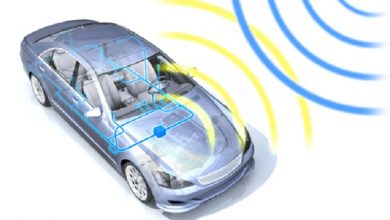Five ways to manage fuel consumption in the vehicle fleet

The success of any company’s business with its fleet largely depends on how effectively fuel monitoring and management are organized within it. For all types of commercial vehicles and special equipment, fuel accounts for a significant part of costs. And if we do not monitor actual fuel consumption and reduce costs, the company will surely lose money and work with low efficiency.
According to our stats around 35% of total spendings of fleet owners go toward fuel purchase. In the transport, logistics, and road construction sectors, fuel expenditures can reach 45-50%. But often, the costs will not be justified if there is no supervision over fuel consumption. When a company does not have a clear understanding of how and where the fuel goes: the profitability of the business drops. When there is no control, there is always the risk of overspending and even fuel theft. Without knowledge of actual fuel consumption, it is challenging to plan and evaluate a business’s efficiency. Figure 1 represents the cost structure of an average vehicle fleet.
In this article, we will try to analyze existing ways of fuel consumption monitoring and help you understand which one is best for your fleet.
1. Monitoring without satellite systems
Oddly enough, some companies still do not use satellite tracking systems to track their vehicles and the drivers’ work. In such companies, fuel accounting is done using outdated and not entirely effective methods.
For example, fleet managers can use the consumption rates stated in the motor vehicle manufacturer’s specification. But you should understand that these rates are average. And as time passes, a particular vehicle’s actual fuel consumption may deviate significantly from the original values. It is also a practice in car fleets to determine fuel consumption using odometer data. But the mileage on the dashboard of a car always has its margin of error. After a time-lapse, the deviation from the actual distance traveled can reach 15-20%. Besides, dishonest drivers can correct mileage. Some vehicle fleets also use fuel receipts from petrol stations or data from fuel cards of petrol station operators when registering and writing off fuel. However, there is a high probability of counterfeiting and fraud in these cases if drivers conspire with petrol station staff.
It is also important to note that fuel control will only be truly effective if it is possible to compare data obtained using different methods. If a fleet management system does not rely on GPS monitoring, it will be difficult to verify other fuel consumption data’s precision and understand the reasons for discrepancies. Besides, without satellite monitoring, it is unlikely to detect downtime at idling speed, the use of vehicles for personal needs, and direct fuel theft.
- Advantages: no
- Drawbacks: lack of reliable information on transport operations
- The efficiency of fuel consumption control: low
- Probability of fuel fraud: high
Where It can be used: any fleet where there is no possibility or interest to save on fuel with modern solutions.
2. Satellite tracking without additional telematics
The essential component of satellite monitoring is a professional GPS tracker installed in a vehicle and transmitting data about its operation to the fleet management system. Along with coordinates and speed, the tracker records the vehicle’s mileage. The satellite mileage data is much more accurate than the data from the built-in odometer. With the help of these data, it is possible to calculate actual fuel consumption more accurately and identify mileage additions by drivers with a high probability.
Simultaneously, based on the information transmitted by the tracker, the system can track routes, geo-fence visits, adherence to planned schedules, and vehicle speeds. That makes it possible to identify the reasons for fuel overruns, which may include: personal use of transport, long idle times, careless and uneconomical driving.
However, with the help of a tracker and without additional solutions, you will not be able to find out how fuel consumption changed on the road, when and where refueling and draining operations took place, or whether there were attempts to steal.
- Advantages: accurate information on basic parameters, including mileage
- Drawbacks: Fuel manipulation cannot be detected
- The efficiency of fuel consumption control: low
- Probability of fuel theft: high
- Where can be used: any transport equipped with trackers and connected to a satellite monitoring system
3. Satellite monitoring using the CAN bus
The essence of this method of fuel control is to connect a GPS tracker to the vehicle’s CAN bus to obtain data that is recorded by an in-built stock fuel level sensor. Today, all modern cars have a CAN interface. It ensures the exchange of information between different sensors, the onboard system, and additional external devices connected to the vehicle. There are three options to configure the tracker’s communication with the on-board network: direct, via contactless readers, and via a CAN-LOG adapter. It will be possible to transmit readings to the monitoring system if the vehicle has an open data transfer protocol.
This method’s advantage is that it is relatively inexpensive, as it does not require additional telematic sensors or installation work. By connecting the tracker to the CAN bus, it is also possible to obtain information about other parameters of the vehicle’s operation: engine speed, motor hours, oil pressure, axle load, and further readings.
But in concern with fuel monitoring, the information obtained from the CAN bus is still not very accurate. As the accuracy of the standard fuel level sensors is 10-15%. That may not be so critical for passenger car fleets. But when it comes to monitoring vehicles that consume large amounts of fuel (trucks, buses), this error is essential. Figure 2 depicts a fuel level graph based on the data from an in-built stock fuel level sensor.
Fig. 2: Fuel level graph based on the data from a stock fuel level sensor
Also, conventional sensors do not do an excellent job of determining the exact time, location, and volume of fuel fillings. The monitoring program is likely to have strange fluctuations in the fuel schedule, false information about drains, “dead zones” (5-10% of the top and bottom tank volume). Thus, in commercial vehicles, the untraceable fuel volume may reach 100 liters or more. Naturally, the risk of fuel theft is relatively high here. Figure 3 compares fuel data recorded on one vehicle using the standard fuel sensor (red) and the Escort fuel level sensor (blue).
However, obtaining fuel data via a CAN bus is often the best way to monitor vehicles that are difficult or unprofitable to equip with additional sensors (methods 4, 5). That is particularly true for passenger cars, where the design features of the tank sometimes do not allow for the installation of third-party equipment, and the 15% error is not so critical.
- Advantages: ease of installation, possibility to obtain other onboard readings
- Disadvantages: high uncertainty in measuring fuel levels, difficulty in identifying drainages
- The efficiency of fuel consumption control: average
- Probability of fuel theft: high
- Where can be used: vehicles with tanks not adapted to the installation of third-party sensors.
4. Satellite monitoring with fuel flowmeters.
Flow meters are telematics sensors installed on the fuel line of the vehicle’s engine system and determine the volume of incoming fuel. Many models of this equipment can also determine engine runtime and the temperature of fuel and lubricants. The information recorded by the flow meters is sent to a GPS tracker, which transmits the readings to the fleet management system.
The readings from the fuel consumption sensors are highly accurate at 97-99%. That gives fleet managers a real picture of the fuel consumption of their vehicles, and they can accurately calculate fuel consumption rates, assess efficiency, and plan costs.
However, this method may not be suitable for everyone. First, buying and installing a fuel flow meter is more expensive than all other methods. Flowmeters are prone to contamination and need to be cleaned periodically. If they are not cleaned, the fuel system of the car may fail. To monitor fuel in the supply line and in the return line, two meters, or a more expensive differential sensor, must be installed. With the help of this equipment, it is difficult for the system to monitor fuel fillings and drains quickly.
Figure 4 compares the readings recorded on one vehicle by a fuel flowmeter (blue graph) and a capacitive fuel level sensor (red diagram). The difference in data accuracy does not exceed 100 ml. But the flowmeter does not make it possible to understand when the fuel was refueled and drained.
Fig. 4: Comparison between the reading from a fuel flowmeter (blue graph) and a capacitive fuel level sensor (red graph)
In many cases, flow meters, despite their cost and several limitations, are still the best solution for satellite-based fuel consumption monitoring. Mainly for select vehicles when the shape of the tank does not allow the installation of capacitive fuel level sensors (Method 5). In addition to fuel readings, the flowmeters can detect motor hours and record various fuel system parameters. In the case of special machinery, this information is vital.
- Advantages: high accuracy, motor-hours control, and additional parameters
- Disadvantages: high installation and maintenance costs, no traceability of fuel drains from the tank
- The efficiency of fuel consumption control: average
- Probability of fuel theft: average
- Where can be used: special equipment with tanks that are not adapted to the installation of remote control units
5. Satellite monitoring with a fuel level sensor
Unlike the flowmeter, the fuel level sensor does not detect the flow of fuel entering the engine but monitors its volume in the vehicle’s tank. It is installed directly in the fuel tank and transmits data on fuel level fluctuations to the satellite monitoring system. When cutting-in such a sensor, it is crucial to perform a professional sensor calibration and the tank calibration.
The accuracy of the fuel level sensor is as accurate as of the flowmeter. The error here does not exceed 1-3%. At the same time, such a sensor makes it possible:
- to record fuel fillings and drains
- determine false and incomplete refueling
- recognize micro drains
- Identify the facts of draining from the diesel return pipe.
Figure 5 shows how a fuel level sensor can be used to track changes in fuel volume in the tank, clearly linked to time and place. The refueling and drains information also helps to identify the facts of fuel drains from the engine system’s return line.
Fig. 5: Fuel level graph indicating a fuel drain and refuelling
Along with high accuracy, the fuel level sensor is the most reliable tool for detecting and stopping fuel theft. But this equipment is not suitable for everyone because of the design of vehicle tanks. For example, on special equipment, tanks often have non-standard shapes with bends. You may have to install two sensors, or you may still have to resort to a different control option. Extended shaped tanks can be found on trucks. In this case, two sensors will also have to be installed to avoid errors due to fluctuations in the fuel level at an angle. On passenger cars, the tanks can be very shallow. The sensor measuring tube can theoretically be cut to any height. But if it is less than 10 centimeters, the fuel data will be incorrect.
But for cars on which tanks can be fitted with such a sensor, this method of control will be most efficient.
- Advantages: high accuracy, ability to track all fluctuations of the fuel
- Disadvantages: complicated installation on non-standard tanks
- The efficiency of fuel consumption control: high
- Probability of fuel theft: low
- Where it can be used: any type of vehicle with tanks that allow the installation of a sensor with a measuring tube.
Conclusions.
Vehicle fleets that have an interest in fuel control cannot omit modern telematics solutions. The M2M market offers a wide range of equipment and systems to implement the control methods described. The choice of the option depends on the type of transport and the specifics of the vehicle fleet. The main thing is to find a way to save on fuel, return on the costs of implementing the solutions, and further benefit with minimal maintenance costs. Table 1 summarizes the main features of fuel monitoring methods reviewed in this article.
For reliability and ease of maintenance, we advise you to pay attention to fuel sensors equipped with BLE (Bluetooth Low Energy) wireless technology. When installing such sensors, there is no need to lay wires to ensure communication with GPS trackers. Therefore, the stable operation cannot be impacted either by the risks of breakage, wear and tear or deliberate damage to the cables. Setting up telematics BLE sensors is quick and easy using a mobile application. Due to their low power consumption, they can operate for up to 7 years on just one battery.
Author:
Tim Almaev
Fuel Monitoring Professional
Many companies with a large fleet of vehicles face some form of theft: drivers can drain the fuel, tamper with fuel cards, and do side jobs.
As a result, the company's losses are fuel overruns, premature vehicle wear and tear, and reduced work quality. Tim Almaev of the Escort Group will explain what methods can eradicate discipline breaches and reduce fuel consumption. Impossible to optimize the fleet without proper monitoring tools, so let's get to know them!
Published in Telematics Wire




